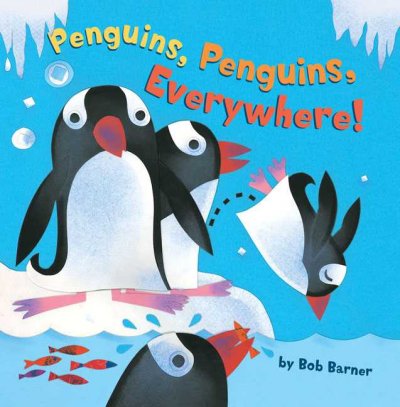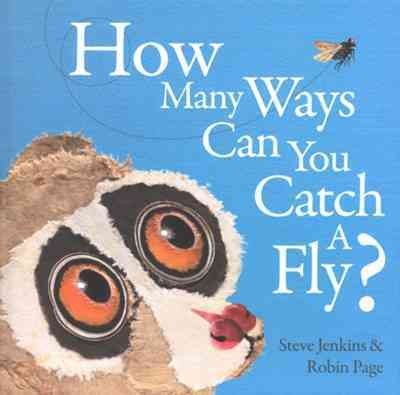This is the latest in an occasional series by Beth Melo, a Southborough mom who loves to read to her kids. In this installment, Beth shares her favorite science and nature reads. This post was originally published on the Southborough Library website, and has been reposted here with permission. For more of Beth’s book recommendations, click here.
Why? Why? Why?: Discovering the World Through Books
In past blogs, I focused on fun stories to read to young children. But there is another large category of books my children enjoy – nature and science.
Books can be a fun way to learn about the world. It starts with your babies’ curiosity about animals and evolves into a deeper curiosity about the world, their surroundings and how things work.
Any parent who has weathered a storm of why’s (along with how’s and what’s) knows that it can become pretty difficult to answer all your child’s questions. (And while sometimes the questions are obnoxious, sometimes they are actually kind of profound.) I found that with my children, telling them that I would find a book at the library to “learn more about it” helped a lot. (Some of the questions were often forgotten by the time I got the book, but they were still interested in learning more about the subject – from animal habits to space rockets).
Some of my preferred authors for nature and science are below. I’ll start off with the baby books, (generally simply fun books about animals) and progress to books more appropriate for K-2nd grade.
 For tiny tots – there are so many fun books about animals and the sounds that they make, too many to list. But I think these authors are special:
For tiny tots – there are so many fun books about animals and the sounds that they make, too many to list. But I think these authors are special:
- Bill Martin is probably most famous for Brown Bear…, which is a great baby book. But for actually learning a little about animals, I prefer Polar Bear, Polar Bear, What Do You Hear? and Panda Bear, Panda Bear, What Do You See?
- Simm Taback’s animal books (Farm Animals and Safari Animals) have colorful, fun illustrations and simple clues to engage children by letting them figure out the animals behind the flaps.
- Melanie Walsh has cute books that don’t so much teach as tickle. Books Do Lions Live on Lily Pads? and Do Monkeys Tweet? allow toddlers to giggle their No’s. My Beak, Your Beak is a little more educational, pointing out the differences and similarities between different animals.
- Nancy Tafuri’s books with lovely illustrations are nice for little ones. Spots, Feathers, and Curly Tails, This is the Farmer, and In the Snow are the best for teaching about real animals. Her other books about animals are sweet, but the animals are anthropomorphized. (Still, children who love animals will enjoy tender books like I Love You, Little One.)
 Once you are beyond the simply cute stage for books, these authors have good “starter” nature/science books for young preschool children:
Once you are beyond the simply cute stage for books, these authors have good “starter” nature/science books for young preschool children:
- Bob Barner has several good books that teach about bugs, animals, space, dinosaurs, and even human anatomy. Text is simplistic and learning doesn’t go very deep. But these are good introductory books for young children. Books include: Bugs! Bugs! Bugs!, Bears! Bears! Bears!, Dinosaurs Roar, Butterflies Soar!, Stars, Stars, Stars, Penguins, Penguins, Everywhere!, Dinosaur Bones and Dem Bones.
- Ruth Heller’s series of How to Hide a . . . books explains how animals camouflage themselves to hunt or protect themselves from predators. Children learn while having fun with this nature version of look and find.
- Anna Milbourne has a variety of educational picture books for young children. The Snowy/Windy/Rainy Day books provide simple explanations of weather. Another series, featuring curious Pipkin the Penguin, attempts to clarify hard to handle concepts for children, such as How Deep is the Sea?, How High is the Sky?, and How Big is a Million? (the last one is available through inter-library loan).
Once their questions become deeper, it’s time to get more serious books about nature and science. Some authors are especially adept at explaining complicated concepts to young children.
 For older preschoolers and kindergartners:
For older preschoolers and kindergartners:
- Nancy Elizabeth Wallace has a great collection of books for teaching kids about the world around them. I found it interesting that she wrote a book Stars! Stars! Stars!, almost the same title as Bob Barner’s book. Some of her titles seem like they belong in a Barner’s anthology (Rocks! Rocks! Rocks!, Seeds! Seeds! Seeds!) to the point that I was confused at first, mistakenly thinking they were by the same author, despite their differences. They actually dovetail nicely. When children are old enough to understand more complicated concepts than Barner’s playful text, Wallace’s books provide much more thoughtful and detailed explanations of science and nature. They also give ideas for parents and children to experiment or interact with the subject matter.
- Steve Jenkins is a prolific author of animal/nature books, and the Southborough Library has at least 17 of his. Jenkins has a distinctive illustration style, but that’s not what I like about his books. He highlights really interesting facts about animals. And by providing different levels of detail, he makes it easy to choose how much information to share (based on the age and interest level of the child). These books are definitely of interest to much older children as well. He also has a knack at honing in on an interesting hook for each book. Two examples:
- Prehistoric Actual Size – unlike books that describe animals (especially dinosaurs) in terms of feet and pounds, this book provides visual representation of their actual size (or part of their anatomy for animals too large for the page), with an index including a small picture of an average size man standing next to each creature to give perspective.
- How Many Ways– Can You Catch a Fly? – Each section explains the variety of ways different animals accomplish a similar goal, some of them bizarrely unexpected.
For K-2nd Grade:
- I just stumbled onto Jacqui Bailey’s Science Works series, which my children like. Monster Bones: The Story of a Dinosaur Fossil, explained the process of how fossils are formed, discovered, and turned into museum displays. Charged up: the Story of Electricity taught them how electricity is generated and distributed, plus gave a basic explanation of static electricity and lightening.
- My daughter has enjoyed Amanda Lumry’s Adventures of Riley series. In the books, Riley’s scientist uncle and his family strive to help endangered animals by better understanding the challenges they face. On each quest, Riley learns about the animals and their habitats. Any children who liked Diego but are now outgrowing it should like these adventures.
Beyond the authors above, the library’s Children’s Department has a great selection of non-fiction books. Often, I’ll ask my children if there is a subject or animal they want to learn about. Then I look in online catalog and check the shelves. I usually find something interesting and appropriate for their age.
I hope these books help answer more why’s for your children than they create. If you have any questions for me, feel free to e-mail becmelo@yahoo.com. (Just please make them about my article or children’s books, since I’m no science or nature expert!)


I am very happy to see this topic! I currently have a stack of children’s books from the library about nature – and will be interested in the suggestions you listed. From my stack I am particularly impressed with “A Sense of Wonder” by Rachel Carson. Its not a children’s book (and its not new) but its about going out into nature with children and keeping that sense of wonder alive. A grownup doesn’t need to know a lot about nature to inspire the interest in a child. Rather taking the time to just go out and explore and enjoy. The Beals Preserve, as many of us know is a wonderful place to start (after their own backyard!) Thank you Beth !